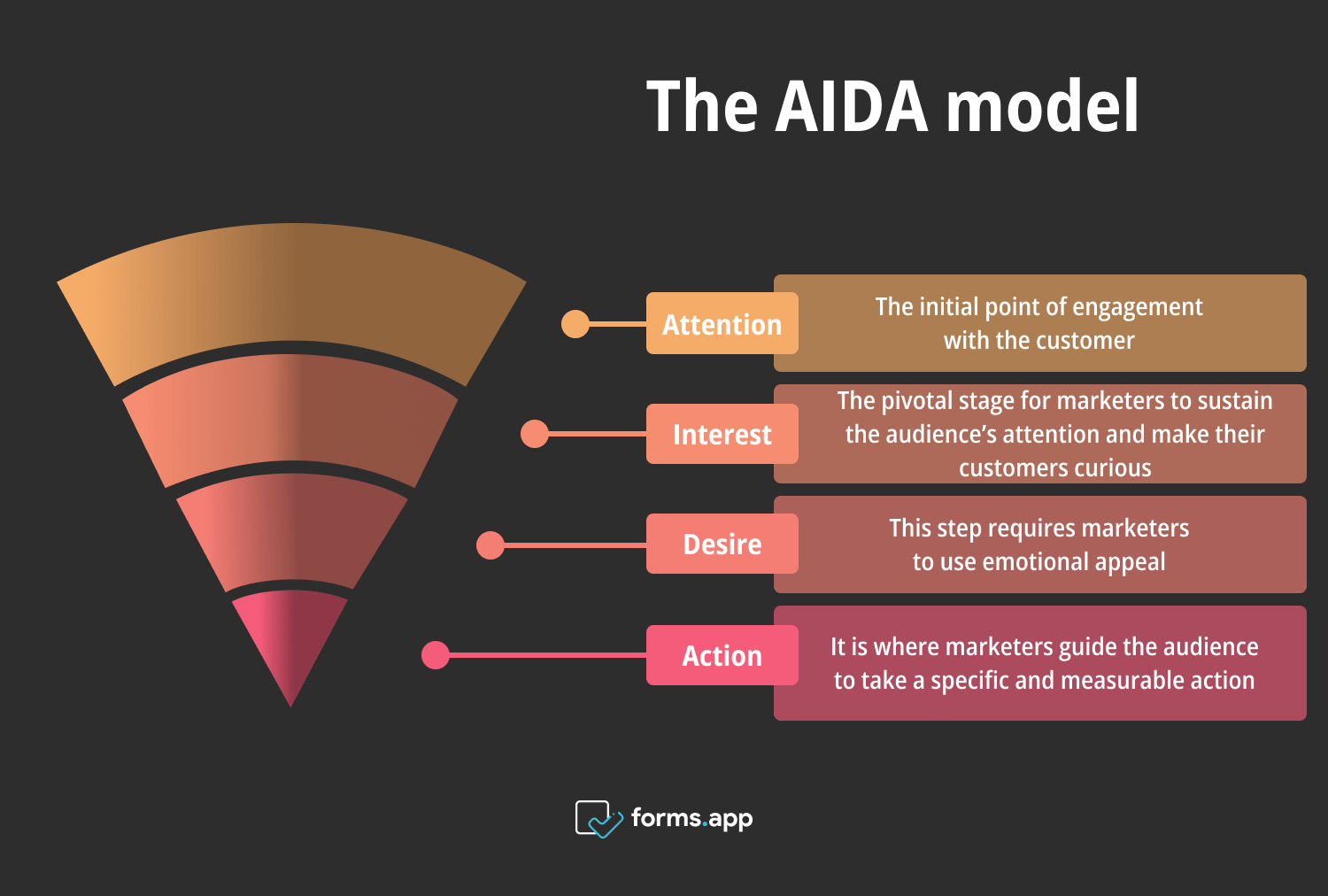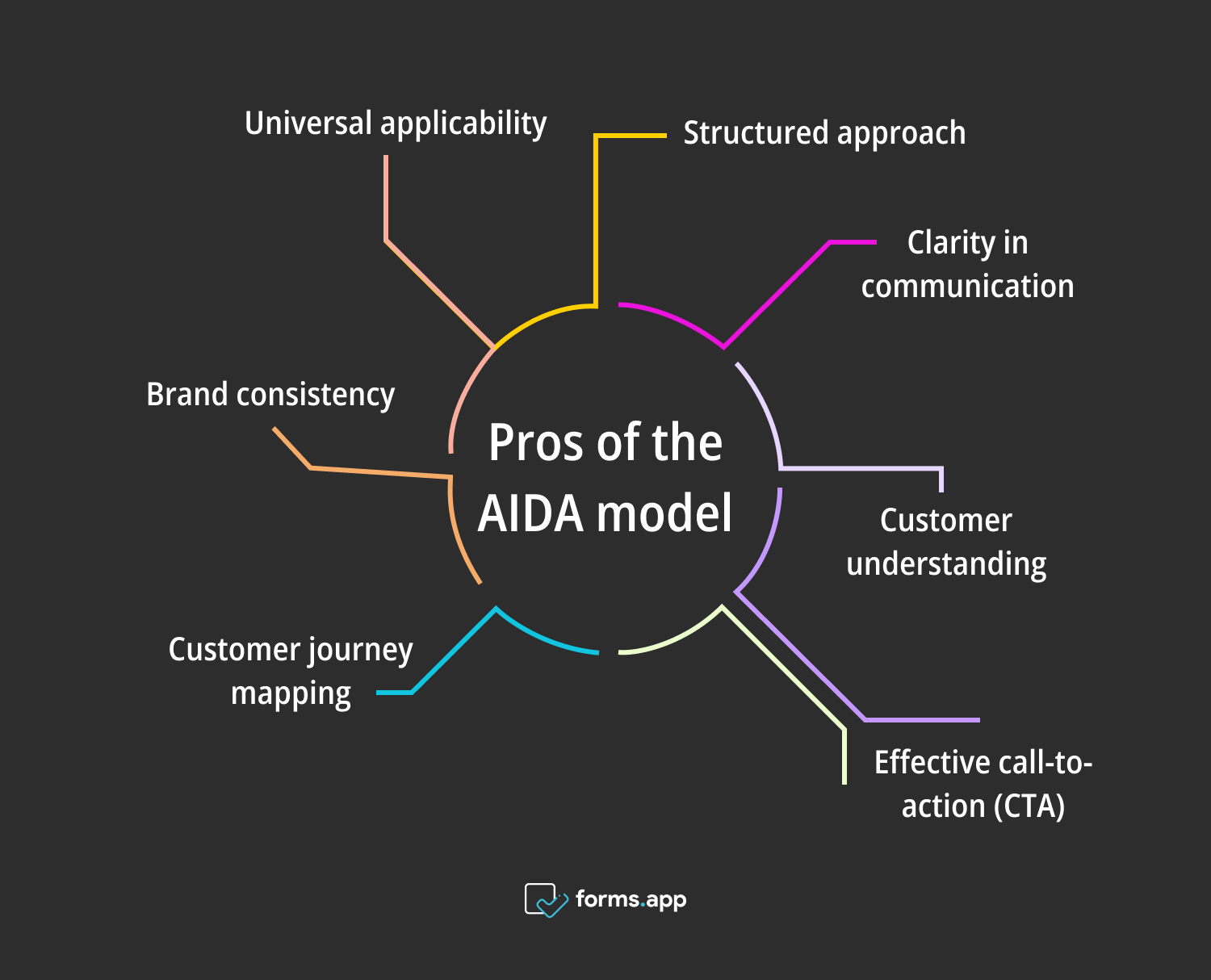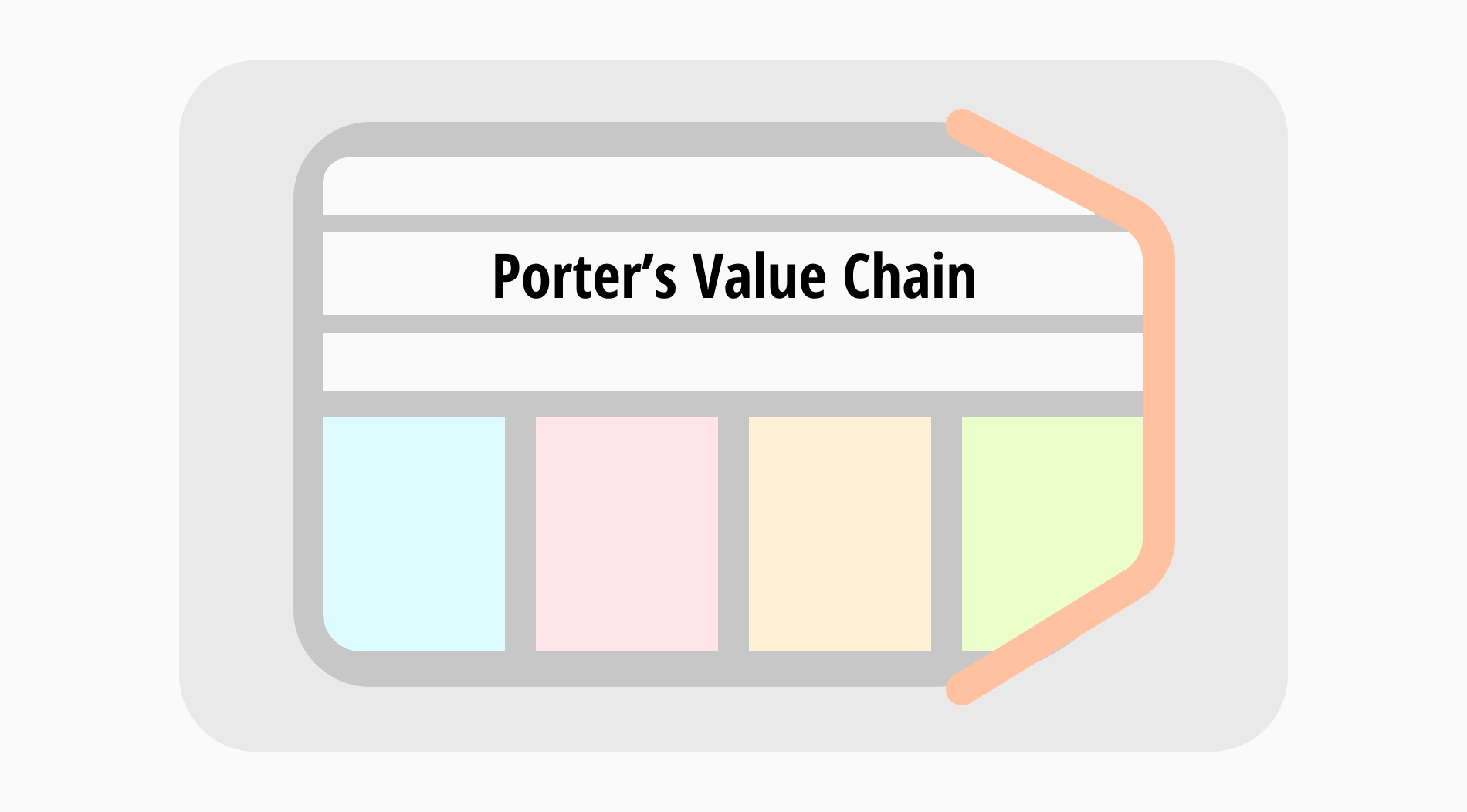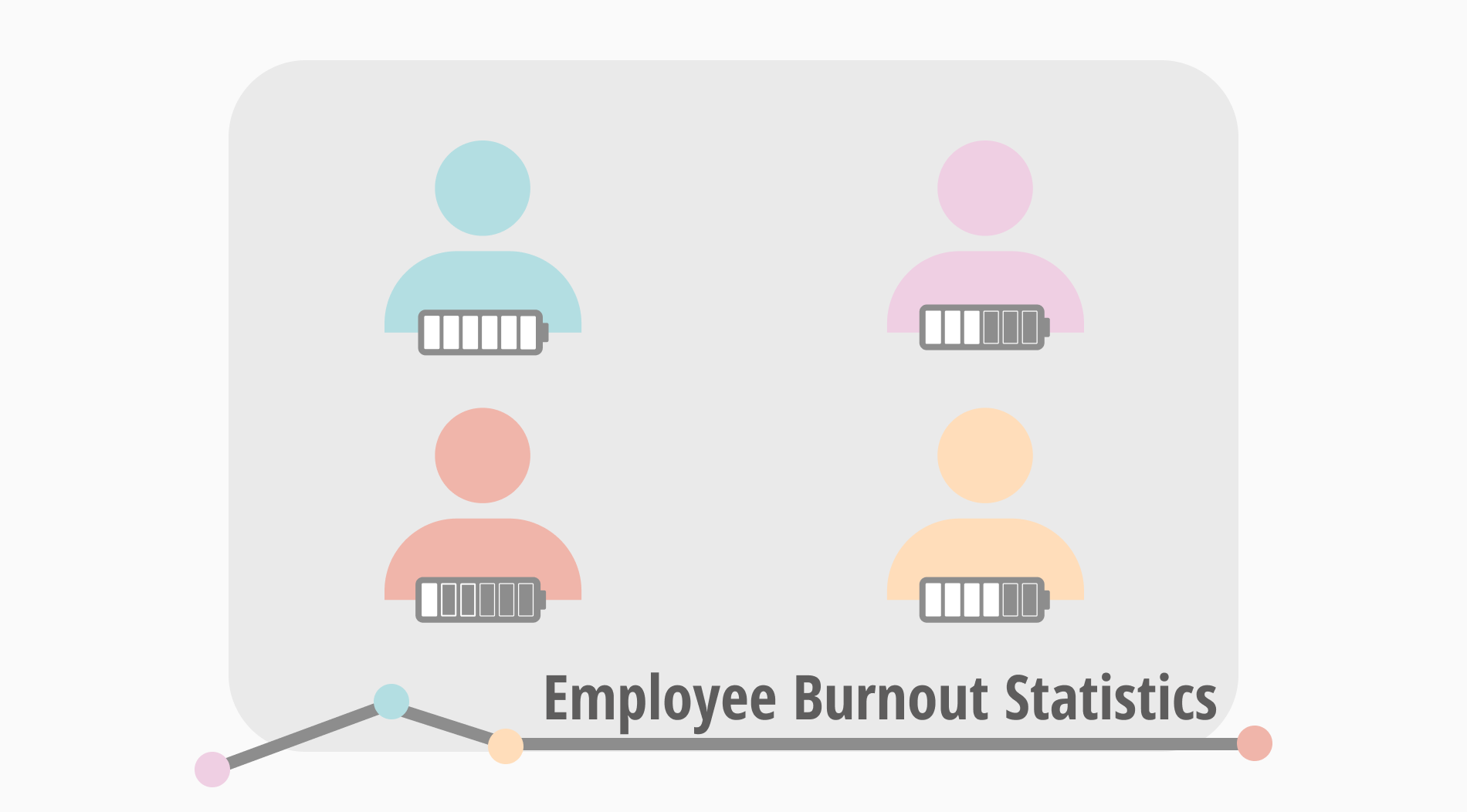
In the complex world of marketing, navigating the customer to your brand requires a strategic approach. You may need both precision and persuasion to persuade customers. In other words, you need a structured methodology. Crafting compelling messages and driving desired actions will bring you closer to your objectives and to a desired customer portfolio.
In this article, we will discover one of these structured methodologies. We will learn about a very practical marketing and communication framework named the AIDA Model. It is like a roadmap for sending messages to grab your audience’s attention and keep them interested. It also helps make them want what you offer and encourages them to take action.
What is the AIDA model?

The AIDA model is a marketing and communication framework developed by the American advertising pioneer Elias St. Elmo Lewis and outlines the stages a consumer follows when they see a persuasive message.
It serves as a guide for creating effective advertising and promotional messages to direct consumers toward certain stages toward taking a desired action.
The acronym AIDA stands for: Attention, Interest, Desire and Action. The AIDA marketing involves strategic application of these stages to create effective advertising and promotional campaigns. You might want to know that many of today’s large corporations use this model alongside with other frameworks.
The AIDA model
The AIDA model involves four stages: Attention, Interest, Desire, and Action. It is a fundamental framework in marketing and communication. It is also a perfect guide to understanding the psychological progression of a consumer’s response to advertising messages. Let’s delve into these stages and explain the AIDA model:

The AIDA model template
1- Attention
The Attention stage is the initial point of engagement with the customer. It requires marketers to make a memorable first impression. Using attention-grabbing headlines, visuals, and relevant content is very important. Creativity also plays a key role as factors like humor or unique elements stand out in a competitive environment.
The clarity and timing of the message are key to the success of this stage. The content should be prepared for the target audience, addressing their needs and interests. Using innovative approaches will get their 'attention' and help them continue to read your content. You should also consider timing and consistency to ensure effective communication with your customer.
2- Interest
The Interest stage in the AIDA model is pivotal for marketers to sustain the audience’s attention and make their customers curious. In this stage, the focus shifts to providing comprehensive information about the product or service. Marketers employ educational consent or real-world demonstrations to engage the audience. Customer feedback adds credibility as well as the comparisons with the competitors.
Interactive content formats can also keep the audience involved. This stage sets the groundwork for the subsequent Desire phase by preparing the audience to consider taking action. To do that, you need to generate 'interest' and keep your potential customers interested in your product/service. Interactive ads in social media or blog posts can be a method for that.
3- Desire
The 'Desire' stage of the AIDA model requires marketers to use emotional appeal. They create associations between their products/services and positive feelings. This phase shifts the focus from the features to the benefits. You will emphasize how your product uniquely fulfills individual needs and enhances lifestyles. By personalizing messages and providing interactive experiences, marketers intensify the overall desirability.
The strategies for this stage include fostering a sense of exclusivity, leveraging social proof, and incorporating visually appealing elements. Your marketing campaign should convince your customers that your product will positively impact their lives. Then, they will start to desire what you are offering, and you will be ready for the final call-to-action.
4- Action
The final phase of the AIDA model, 'Action,' is where marketers guide the audience to take a specific and measurable action, such as making a purchase, filling out a form, or at least subscribing. To motivate prompt actions, you can offer incentives and create a sense of urgency. This is the culmination of the previous three stages.
After prompting actions, you can utilize thoughtful thank-yous and follow-up strategies to maintain positive engagement. Trust signals and user-friendly experiences reduce hesitations. Post-action strategies and feedback mechanisms will sustain your customers' attention, interest, and desire for your product, and they will take action about it.
Where to use the AIDA model
The importance of the AIDA model in advertising, as well as many other environments, is evident. It can be effectively used in various environments and industries where communication and persuasion are essential. It is a valuable framework in any setting where influencing human behavior through communication is a primary objective. The AIDA framework can be used in the following:
- Marketing and advertising
- Sales
- Digital marketing
- Content creation
- Product launches
- Public relations
- Event promotion
- Educational settings
- Employee training
Examples of the AIDA model
So far, we have covered the essentials of the AIDA model and seen its stages in detail. It is a structured framework for effective communication and persuasion in marketing and advertising. Today, many large corporations benefit from the AIDA model in arousing the interest of their customers. Let’s have a look at some AIDA model examples:
1- Nike
Nike is known for its attention-grabbing advertising campaigns. With powerful visuals, inspiring stories, or celebrity endorsements, they create content that stands out. It also often uses storytelling to create interest, involving athletes overcoming challenges. Endorsements from them generate curiosity and interest.
Nike associates its products with emotions such as determination, success, and empowerment. Their motto, 'Just Do It' reinforces a desire for action and achievement. It also incorporates clear call-to-action in its marketing by prompting customers to visit their websites to make purchases. Their limited-edition releases and exclusive collaborations create a sense of urgency.
2- Apple
Another AIDA model advertising example can be seen in Apple’s strategies. Apple captures attention with highly anticipated product launch events. These events reveal cutting-edge features and showcase design innovation. Apple also sustains interest by emphasizing the design aesthetics and functionality of its products. Its marketing materials highlight user-friendly interfaces and innovative technology.
Apple cultivates desire by positioning its products as symbols of innovation, status and lifestyle. The brand creates a sense of exclusivity and their advertising often features aspirational scenarios. It guides action by streamlining the purchase process. Apple Stores, online platforms and the Apple ecosystem offer a smooth experience, making it easy for customers to make a purchase.
Advantages of using the AIDA model
The AIDA model offers several advantages in marketing and communication strategies. By leveraging these advantages of the AIDA model, businesses can create more effective and targeted marketing campaigns, fostering customer engagement and driving desired actions. Let’s see what these advantages are:

Reasons to use the AIDA model
- Structured approach: It provides a systematic and structured approach for crafting persuasive messages, ensuring that marketing efforts follow a logical path from attention to action.
- Clarity in communication: It encourages clarity in communication and helps marketers to send their message in a focused manner at each stage.
- Customer understanding: The AIDA model promotes a deep understanding of customer behavior by acknowledging the psychological process from attention to interest, desire, and action.
- Effective call-to-action (CTA): AIDA emphasizes the importance of a clear and compelling call-to-action. It is crucial for prompting customers to take specific and measurable actions.
- Customer journey mapping: The AIDA model facilitates the mapping of the customer journey, helping businesses understand where customers are in the decision-making process.
- Brand consistency: It ensures that the messaging aligns with the marketing strategy, reinforcing a coherent brand image.
- Universal applicability: Its principles are not limited to specific industries or types of products, making it applicable to a wide range of businesses and marketing scenarios internationally.
Frequently asked questions about the AIDA model
As we have seen, the AIDA model provides a great many advantages for marketers in shaping effective marketing strategies. This popular model sparks curiosity and questions about its application. Let’s address some frequently asked questions to provide clarity and further insights into the power of the AIDA model.
The four elements, also known as the stages, of the AIDA model are: Attention, Interest, Desire and Action. These elements/stages collectively represent the customer’s psychological journey from attention to action. They form a framework for marketing and communication strategies.
The AIDA model is a good model because it is an effective framework with a strategic approach. It has a customer-centric focus, and it is adaptable to target audiences. It enables marketers to create impactful communication that aligns with the desires of their target audience.
The AIDA model, while effective, may have some weaknesses to take into account. Its simplified and linear representation may not fully capture the complexity of modern consumer behavior. The model’s focus on pre-purchase stages overlooks the post-purchase/post-sales engagement and customer loyalty.
Additionally, it assumes a rational decision-making process and neglects emotional influences. AIDA’s homogeneous treatment of the audience and simplified view of motivations can overlook the importance of complementing it with strategies that consider the diverse and dynamic nature of consumer interactions.
AIDA is important in marketing because it prompts the customer for a purchasing decision and improves the qualities of success. With its structured framework, customer-centric approach, versatility and measurement and optimization, it is an invaluable tool for marketers to prompt their customers/audience to take action and make purchases.
There are similar frameworks to the AIDA model in marketing and communication. For example, the PAS model (Problem, Agitate, Solution) is an effective model in addressing pain points and presenting solutions. There is also the DRIP model (Decision, Research, Information, Purchase), which is a decision-making process. Marketers often choose or adapt these models based on their specific communication objectives.
Wrapping up
In conclusion, the AIDA model (Attention, Interest, Desire, Action) is a marketing and communication framework for marketers involving the stages of the consumer behaviors. It is a valuable guide for companies and organizations worldwide and it has a lot of advantages.
In this article, we covered the AIDA model, discovered the environments to use it and its advantages. We have looked into famous companies and how they use each phase of this model, and we have answered some of the most frequently asked questions about this framework. Now, it is time for you to try the AIDA model in your business!
Fatih is a content writer at forms.app and a translator specializing in many text domains, including medical, legal, and technical. He loves studying foreign languages. Fatih especially likes to create content about program management, organizational models, and planning tools.



 6 min read
6 min read

